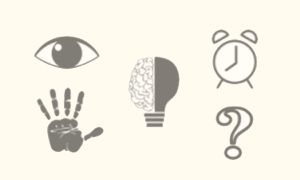Notice & Wonder: Foundation for scientific Inquiry in the CZ
Grades K -
8
All Disciplines • Hydrology • SoilScience/Pedology
Activity • Lesson Plan
Educational Objectives
After this activity, students will be able to:
- Observe and record Earth surface and environmental phemomena using their senses.
- Question their observations and hypothesize cause-effect relationships, functions of particular structures, and predictions of how a property or process may change over time or across space.
Audience
K-12
NGSS Crosscutting Concepts: Cause and Effect - Mechanism and Explanation | Energy and Matter - Flows, Cycles, and Conservation | Structure and Function | Stability and Change
NGSS Science & Engineering Practices: Asking Questions and Defining Problems | Planning and Carrying Out Investigations | Engaging in Argument from Evidence
NGSS Disciplinary Core Ideas: ESS2 - Earth’s Systems
Observatory: National CZO
Author(s): Michelle Gilmore (University of California, Merced)
Funding: National Office of the Critical Zone Observatory Program
Details for this Resource
Observing, interpreting, questioning, hypothesizing, and communicating about the world around us are foundational research skills practiced in every scientific discipline. These skills can be developed at any age through the framework provided by two words: Notice and Wonder. We provide information about how “I notice...” and “I wonder...” can be used to engage in scientific practices and explore the Critical Zone, the outermost layer of Earth that forms its surface and ecosystems. With Notice and Wonder in our scientific toolkit, we provide an example of how you can use these practices to qualitatively and quantitatively explore a particular phenomenon in the Critical Zone: Where does water go when it rains?
Explore Further


